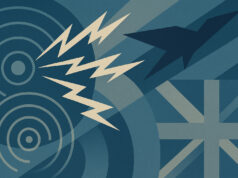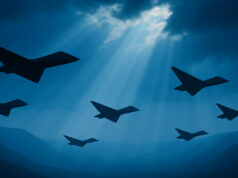There are nine countries in the world that have nuclear weapons. Between them they possess an estimated 15,000 nuclear warheads.
A House of Commons Library briefing paper has been published as a brief guide to which countries possess nuclear weapons and how they are seeking to either modernise or expand those capabilities. The following is a brief excerpt.
UK
At present the UK’s stockpile is 225 warheads, although that will reduce to no more than 180 warheads by the mid-2020s. At this point the UK will have achieved a 65% reduction in the size of its overall nuclear stockpile since the height of the Cold War.
United States
The United States still retains an extensive force (6,800 nuclear warheads in total) and is in the process of replacing or modernising its capabilities through an extensive programme that is estimated to cost $400 billion over the next decade and $1 trillion in total over the next 30 years.
Russia
Russia has the largest arsenal in the world (approximately 7,000 warheads) and since 2008 has been undertaking an extensive programme of modernisation.
China
Precise information on the extent of China’s nuclear arsenal is difficult to obtain, due to a lack of open source information and often contradictory or exaggerated claims.
China’s stockpile is estimated at 270 warheads. Over the last two decades China has, however, been actively seeking to expand its nuclear capabilities in order to achieve a more robust and survivable force; while at the same time developing a credible second-strike capability. It is the only acknowledged weapon state under the NPT that is expanding its inventory.
France
Since the end of the Cold War France has scaled back its arsenal by 50%, with a reduction in both its overall holdings but also the withdrawal of several weapons systems, including its land-based ballistic missile capability. It now has a stockpile of less than 300 warheads. France does not participate in NATO’s nuclear planning mechanisms and its forces are not formally assigned to NATO.
India
Public information on India’s weapons programme is, however, scarce. It is estimated to have an arsenal of between 120 and 130 nuclear warheads, although there is some doubt as to how many are operational. India continues to produce fissile material for weapons purposes and is actively working to expand both its nuclear arsenal and its delivery capabilities. In August 2016 it completed the ‘nuclear triad’, enabling delivery of a nuclear warhead by land, sea or air.
Pakistan
Pakistan is estimated to have a stockpile of 130-140 warheads. Like India, it continues to produce fissile material for weapons production and it is thought to be expanding its nuclear arsenal faster than any other country.
Israel
Successive Israeli governments have maintained a policy of official ambiguity on the issue of such weapons. Israel has never demonstrated its capability through a test, nor has the country ever confirmed or denied having nuclear weapons. Despite this, it is universally acknowledged that Israel possesses a nuclear weapons capability (approximately 80-100 warheads), outside of the framework of the NPT.
North Korea
North Korea possesses a short-to-medium range delivery capability capable of targeting locations in its immediate sphere of influence, including US forces in the Pacific. Achieving a viable long-range capability is currently its objective and in July 2017 North Korea successfully tested, for the first time, an ICBM technically capable of striking the United States.
Read the full and in-depth House of Commons briefing paper here.













Less than? That could imply one in numeric terms. As with everything defence related, certainly from the UK, vague malleable comments, with no decisive or conclusive answers, leave us none the wiser. Security may be an acceptable cloak, but my gut feeling, is that it is just an overcoat, to mask reductions in capability which, in the visible forces are sadly well underway, yet again. British military capability is being debilitated, more heavily now than I can ever recall. In the 70’s, I thought we were getting a bit thin on the ground.
We need Dreadnoughts, but also a lot of other capacity for other roles.
The success of nuclear weapons is not needing to use them……